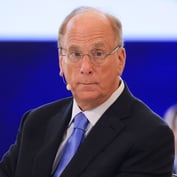What You Need to Know
- Private payrolls increased 497,000, more than double the median estimate in a Bloomberg survey of economists.
- “The strength of the U.S. labor market is almost unbelievable and this should further push out any concept of a possible recession in the U.S.,” explained Horizon Investments' chief investment officer.
- As for Thursday's selloff, it “is driven by the idea that the economy is a freight train that can’t be stopped ... ,” said CIBC Private Wealth's CIO.
Stocks fell, while Treasury yields spiked to levels last seen in 2007 as strong private hiring data fueled bets the Federal Reserve will have to become more aggressive in its battle against inflation.
The S&P 500 benchmark pared losses after falling as much as 1.4%, the worst drop since May, as figures published Thursday by the ADP Research Institute showed U.S. companies added the most jobs in over a year in June, underscoring the ongoing strength of the labor market.
Swap contracts linked to future policy decisions almost fully priced in a quarter-point increase by July 26 and showed a growing likelihood of an additional hike by year end.
Stocks on the move included Exxon Mobil Corp., which fell after forecasting a $4 billion hit to earnings while some of the year’s best performers, including Nvidia Corp. and Tesla Inc., slid.
Treasury yields rose across the curve after the ADP report and extended their climb after data showing the service sector expanded in June at the fastest pace in four months.
The policy sensitive two-year rate climbed above 5% to a 16-year high before the move faded, while the 10-year rose to 4.08% for the first time since March.

Stunning Job Numbers
Private payrolls increased 497,000, more than double the median estimate in a Bloomberg survey of economists. Separate data from Challenger, Gray & Christmas Inc. showed the pace of job cuts by U.S. employers slowed in June.
The numbers stunned Wall Street.
“The strength of the U.S. labor market is almost unbelievable and this should further push out any concept of a possible recession in the U.S.,” said Scott Ladner, chief investment officer at Horizon Investments. “But, it should also push out of the market any hopes of a Fed rate cut during 2023.”
The report was “literally off the charts relative to what was expected,” according to Peter Boockvar, chief investment officer of Bleakley Financial Group. “This jobs report squares with nothing in the survey data, nor the claims figures and from what companies themselves have been saying about hiring intentions, especially with the lackluster growth in the economy.”
Too Hot to Handle?
Dallas Fed President Lorie Logan voiced her concerns that inflation was still running too hot and more rate hikes were needed at an event in New York Thursday.
Stocks have been losing ground after a strong first half of the year as continued hawkishness from central banks dampens hopes of a soft landing for the global economy.
“The selloff is driven by the idea that the economy is a freight train that can’t be stopped and that the Fed is going to have to work even harder,” said David Donabedian, chief investment officer of CIBC Private Wealth U.S. “And you certainly see that in the bond market, where you have an even more dramatic reaction.”
Friday’s nonfarm payrolls report may provide further clues on the path for policy after minutes from the Fed’s June meeting showed division among policymakers over the decision to pause rate hikes, with the voting members on track to take rates higher later this month.








 July 06, 2023 at 02:44 PM
July 06, 2023 at 02:44 PM












 Copyright © 2024 ALM Global, LLC. All Rights Reserved.
Copyright © 2024 ALM Global, LLC. All Rights Reserved.